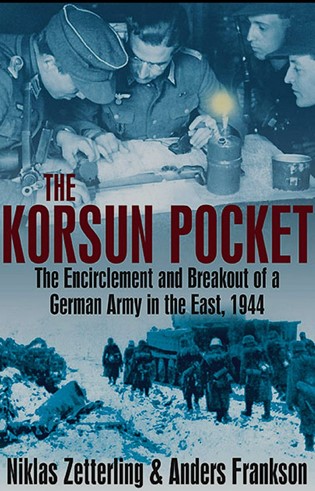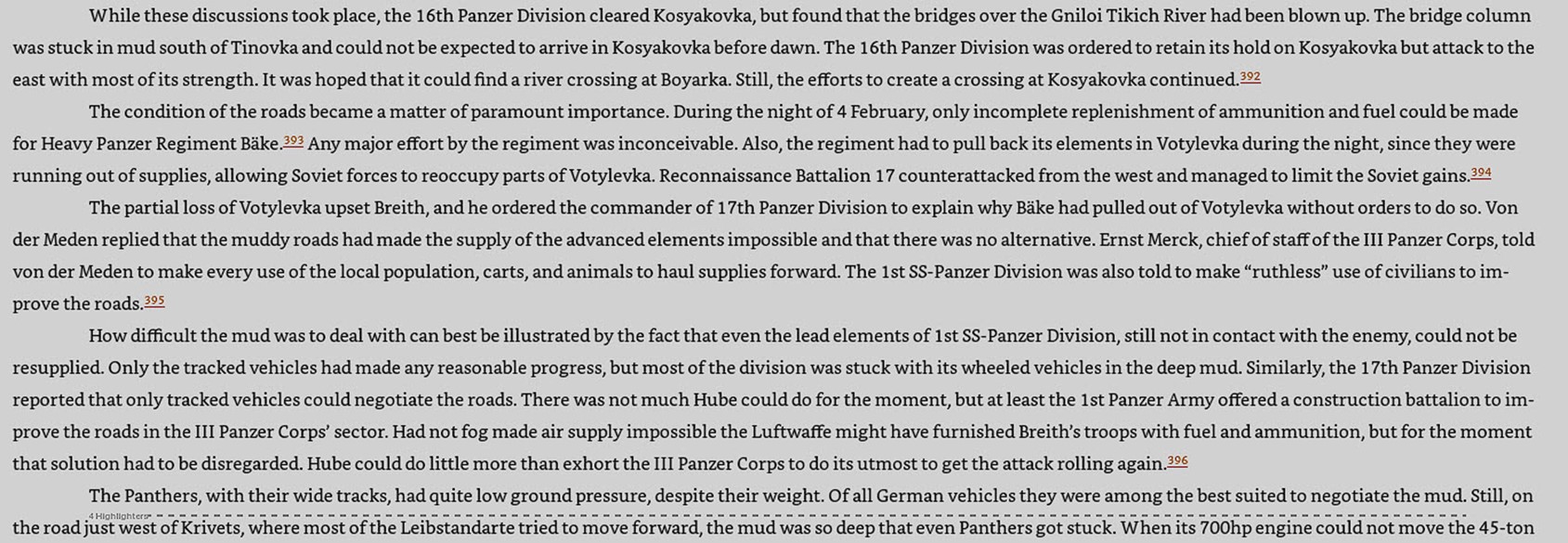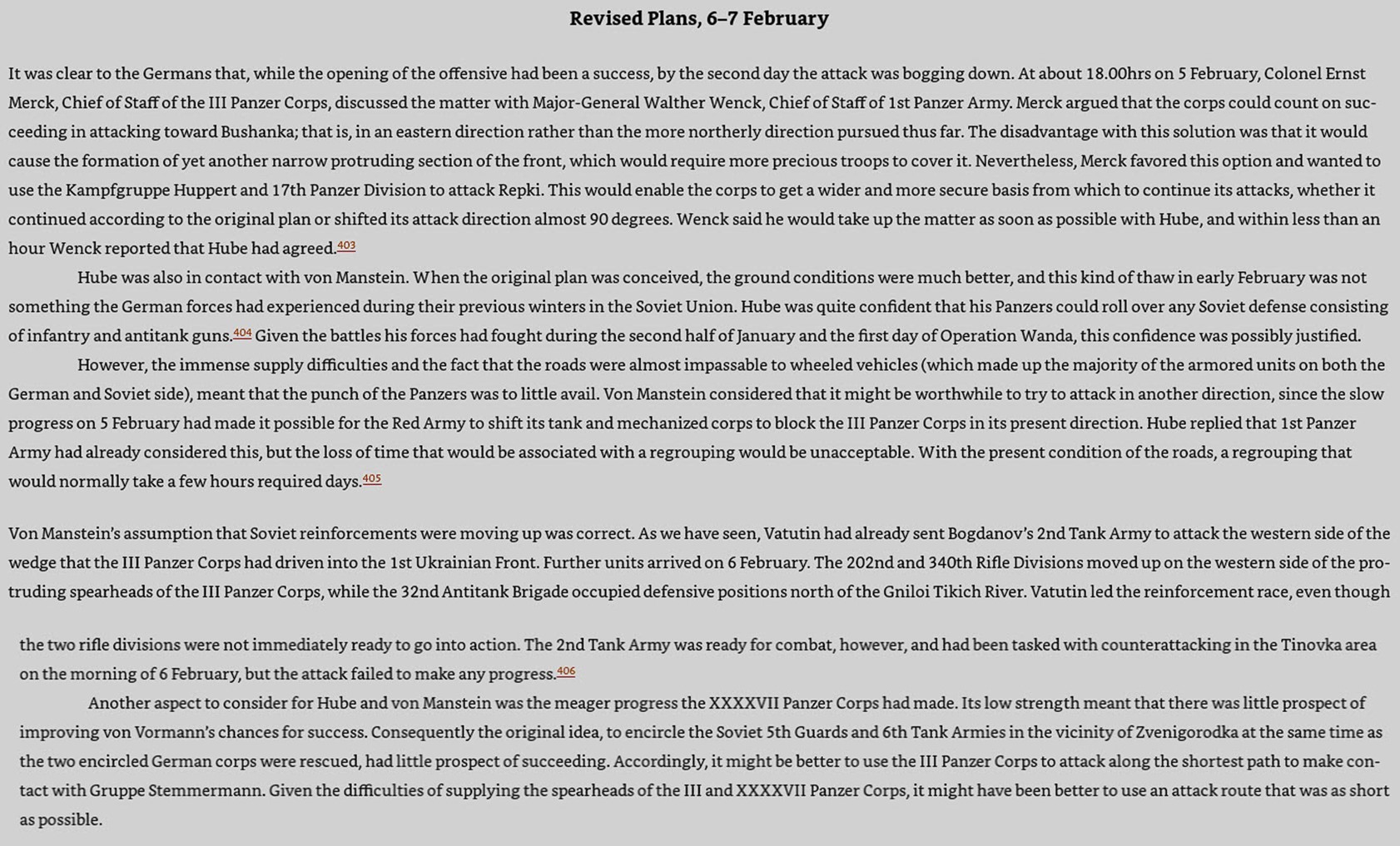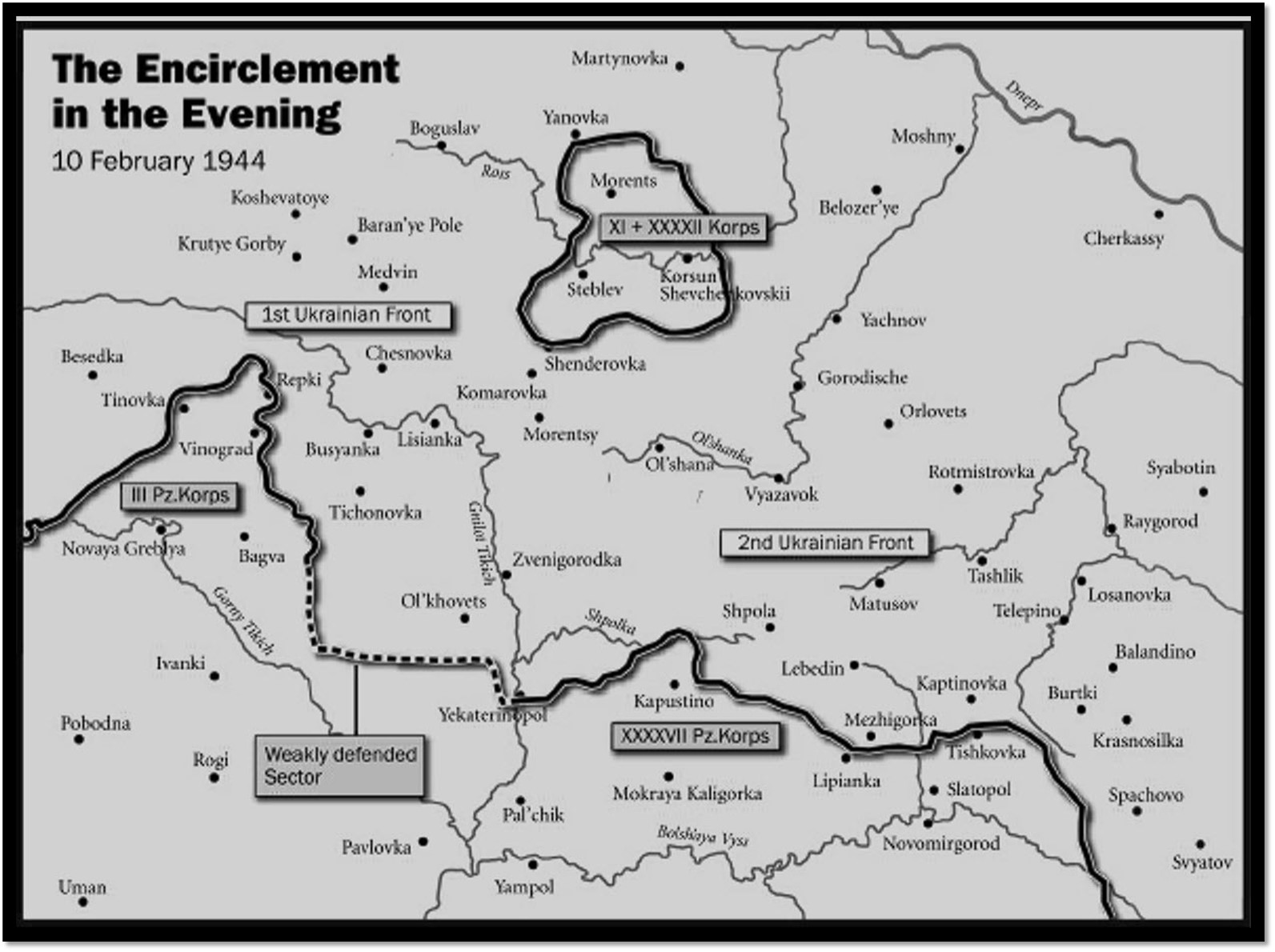Historical Update
We continue our game play reports of the Pre Production release of Korsun Pocket 2.
Breaking stride to share a historical update on what really happened, built on “The Encirclement and Breakout of a Germany Army in the East 1944.”
Our current game play is up to the 5th of Feb so this seemed like a good place to insert the 6th and 7th action from the book:







There are three books out about the Korsun-Shevchenkovsky operation, and unfortunately, all three leave a LOT to be desired. The first one was actually written during the war. It was a “sbornik”, a collection of documents and studies, that the Soviet high command ordered done after major operations as a means of drawing lessons and correcting doctrine and practices. The sbornik on the KP operation was the first one published, and I have to say, is one of the worst. The study is available in English, translated by David Glantz and Harold Orenstein. The book is unfortunately just the original Soviet study, without much analysis or criticism. It reads like it was written by some staff officers who were big fans of Ivan Konev. It barely mentions the initial attack by III Panzer Corps in early February. It has some interesting information, and is worth reading, but should be taken with a “pood” (36 lbs) of salt.
The second, chronologically, is Zetterling & Frankson’s The Korsun Pocket. The authors write well, and have done a lot of research, primarily in German sources. The book is written with an “objective” voice, but in fact it is the German story of the battle. Z&F are past masters at the art of juggling tank strengths/losses, always with the object of insisting that the Soviets could barely lay a glove on the Germans. All German tank losses are dismissed as not losses if the tank was only damaged, only tanks that burned or blew up are counted. So a tank that stripped a gear, or took a hit through the turret that turned the crew to strawberry jam but the hole can be welded up and the ammo didn’t detonate it is similarly not counted. They fail to note that the bulk of the damaged German tanks were towed to Uman, where the Soviets overran them two weeks after the end of the KP battle. At the same time the authors insist that the Soviets lost more tanks than they took into the battle. They perform some remarkable gymnastics to prove that the Germans took very few losses in the battle. It is of the school of German apologistics that insists, “They only beat us because we ran out of bullets before they ran out of men, but if only that stupid Hitler hadn’t made so many mistakes, we would have won. Isn’t that a shame?”
The third book is the richly illustrated Hell’s Gate by Douglas Nash. If you are a fan of the brilliant Nazi propagandist, Paul “Carell” (Schmidt), you’ll just love Doug Nash. If Z&F tell the German story, Nash sings it. He has a special fondness for the men of the Waffen SS, and he lovingly tells their story. Including such gems as captioning a picture of SS troopers billeted in a Ukrainian household, telling us of the warm relationships between the Nazis and the untermensch. And then, trying to explain why these same Ukrainian peasants rose with axes and pitchforks to attack the Germans, tells us it was only out of fear that the commissars would shoot them all for collaborating with the Germans if they didn’t. Take some Dramamine before cracking this one, or you’ll find yourself nauseous. The book was published fairly recently, is nearly innocent of any Soviet sources in its bibliography, and smells badly.
All that said, one should read all three accounts, there are bits of truth to be found in each. Z&F did excellent work on the German OB, and I know that the holdings in the National Archive are somewhat spotty (though I dug a lot out of them initially). The Journal of Slavic Military Studies had a great article on the fight of the 5th Guards Cavalry Corps during the operation, and Rotmistrov wrote of the battle in one of his memoirs.
But the book on the battle, comparing the records of both sides, and not written with the aim of glorifying one side or the other, has yet to be written. Read all, trust none.
In the game there is a historical article, and brief historical descriptions with each scenario. I would modestly suggest they are more reliable than ANY of the above cited works.
you need to get busy writing then!